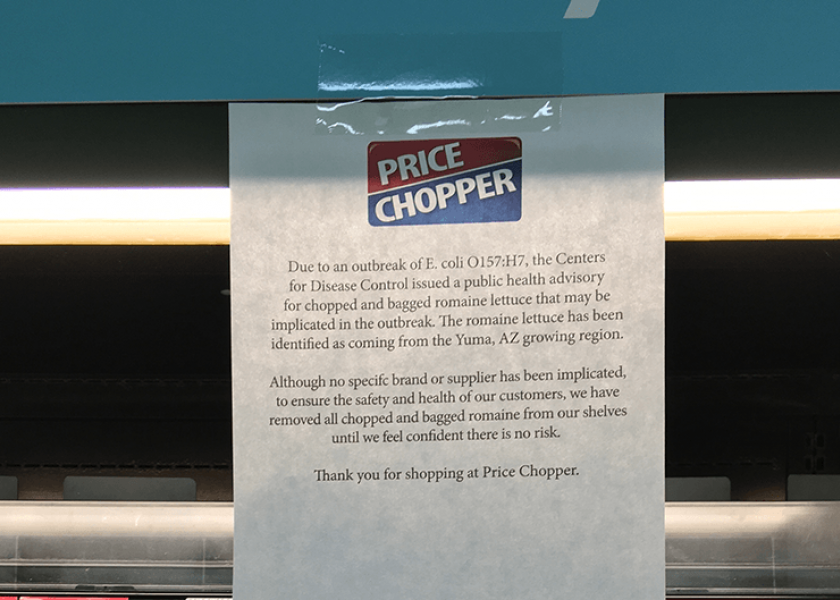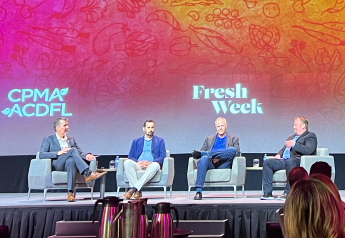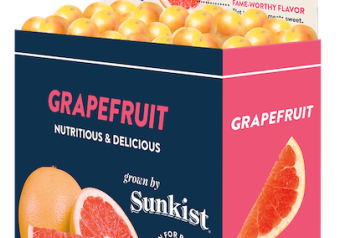What you need to know about the outbreak linked to romaine

UPDATED — April 18, 6 p.m. CST
As companies wait for more information from the Centers for Disease Control and the Food and Drug Administration on the E. coli outbreak that has been ascribed to chopped romaine from Arizona in general rather than to a specific supplier, fresh produce industry associations are communicating what is currently known about the situation.
The United Fresh Produce Association, through vice president of food safety and technology Jennifer McEntire, issued a Q&A-style update to members on the topic April 16. The Packer also contacted Bob Whitaker, chief science and technology officer for the Produce Marketing Association, and the Centers for Disease Control and Prevention.
Below are the latest updates on areas of interest related to the outbreak.
Why the CDC and the FDA issued an alert before determining the specific source of the illnesses
The agencies informed produce groups about the initial alerts shortly before posting them April 13, and officials listened to industry concerns about a broad warning rather than a targeted one but decided they had to act on the information available, according to McEntire.
“FDA and CDC noted their concern with the high number of illnesses in a short time frame (the most they have seen in a long time) and the severity of illness and their concern that product could still be out there,” McEntire said.
The hospitalization rate was also a factor. The CDC reports it is currently at 65%, significantly higher than the normal rate of about 30%.
“They did not want to risk people continuing to eat affected product and becoming severely ill while the investigation continued,” McEntire said. “This is a devastating illness and they did what they felt was in the interest of public health.”
The CDC and FDA continue to emphasize that only chopped romaine from the Yuma, Ariz., growing region is suspected in the outbreak, and they continue to confirm that whole head romaine and romaine hearts have not been implicated, nor has any romaine from other growing regions.
In a statement April 18, the California Leafy Greens Marketing Agreement praised the federal agencies for their handling of the situation.
“Although the exact brand or brands of lettuce that may have caused this outbreak is not known, government agencies, retailers, restaurants and producers quickly acted to do everything possible to remove any product that could possibly have been involved in this outbreak,” the organization said in a news release. “Because of the collaborative nature of the industry and the ability to trace the product to the originating area, this quick action helped minimize further risk to consumers.”
Why the word “recall” has been used, even though a specific source of the outbreak has not been announced
In the wake of the initial CDC alert, some suppliers — and subsequently retailers — voluntarily withdrew product from the marketplace, even though their specific product has not been connected to illnesses or the bacteria causing them.
In some cases, these moves have been described by those companies as recalls.
McEntire said that the produce industry is asking members of the supply chain to refrain from using “recall” because consumers may assume when they hear the word that the specific product in question has been definitively linked to the outbreak.
Since the CDC noted in its April 18 update that most ill people report having eaten chopped romaine at a restaurant, more of those establishments may also decide to err on the side of caution when it comes to offering the product.
How retailers can communicate with consumers about the situation
Whitaker recommends referring shoppers to the authority on the outbreak, because the CDC has been clear that only chopped romaine from Arizona is suspected as the source of the illnesses. Once stores verify with suppliers that their romaine is coming from a region other than Yuma, they can communicate that to consumers via signage and through employees, who should have a quick training on how to accurately answer questions shoppers might ask.
When the agencies issued their initial alerts April 13, produce industry groups stated that nearly all romaine being packed and shipped now is coming from California.
Movement reports from the U.S. Department of Agriculture showed a similar picture, with the vast majority of shipments in April coming from California and shipments from Arizona declining between the first week of the month and the second week of the month.
Whitaker said numerous large romaine growers transitioned out of Yuma weeks earlier because they had already scheduled to do so, while others that were still transitioning spent the weekend after the alert making sure that any product shipped from that point forward was only from regions other than Yuma.
Citing the Arizona Department of Agriculture, the California Leafy Greens Marketing Agreement stated in its April 18 news release that shipments of romaine lettuce from Yuma have ceased.
In addition, the organization noted, any contaminated product is probably gone from the supply chain.
“Because of the perishable nature of romaine lettuce, it is very unlikely that any romaine lettuce from Yuma, Ariz., that was purchased and consumed in mid-to-late March is still available in stores or other distribution channels,” the California Leafy Greens Marketing Agreement stated in the release.
Why you might see consumers avoiding all romaine regardless of origin
Consumer Reports has told people not to eat any romaine from any region, stating that consumers should not be expected to figure out where the chopped romaine comes from.
The produce industry was disappointed to see such a broad warning, Whitaker said.
McEntire said industry groups have contacted Consumer Reports to urge it to issue corrections on certain statements.
Consumer Reports stated in its article that it is unknown why the CDC and FDA have focus only on “bagged” romaine, but the outbreak alert explains the CDC has focused on chopped romaine based on its interviews with the people who became sick.
When more information will be available
It is unknown when the FDA and CDC will provide their next updates.
In its April 18 notice, the CDC added 18 more cases to the outbreak, bringing the total to 53.
Thirty-one people across have been hospitalized, including five experiencing kidney failure. Cases are spread across 16 states.







